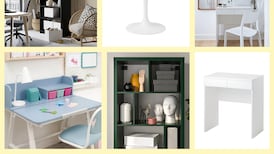As the clocks spring forward this weekend, the thought of losing an hour of precious sleep might be weighing on your mind. But there’s more to a restful night’s sleep than getting the recommended eight hours. One of the key factors to feeling rejuvenated lies in selecting the right bed. Making the right choice can transform even a shorter night’s rest into a restorative experience. So, whether you’re planning a complete bedroom makeover or simply looking to improve the quality of your sleep, here are some tips for choosing the perfect bed to help you get the most out of your time asleep, even when it is cut short.
The perfect fit
Choosing the right bed size can significantly impact the quality of your sleep. Standard bed dimensions range from single to super king, offering various options to cater to different needs and preferences. However, it’s important to remember that there’s no one-size-fits-all solution when selecting the perfect bed size. Your room size, personal preferences and sleep habits will all play a role in making the best choice.
Start by evaluating your bedroom’s layout to optimise the space available. Measure the room and determine the maximum bed size that won’t make the area feel crowded. A helpful tip is to outline the furniture using tape or paper, ensuring any additional furniture or storage fits comfortably.
If you share the bed with a partner, you might want to consider a larger size, like a king or super king, to ensure ample space and comfort for both of you. For taller individuals or those who tend to move around during sleep, consider opting for a longer bed or a custom-made mattress to provide extra length and accommodate your needs.
READ MORE
Positioning
The placement of your bed within your bedroom is a key factor in determining the quality of your sleep. To create an ideal sleep environment, consider the following guidelines.
Position your bed against a solid wall, away from windows and doors, to minimise disturbances from external noise and light. This positioning fosters a sense of security and seclusion, promoting a more restful sleep. Avoid placing your bed directly under a window, as this can expose you to drafts and temperature fluctuations, disrupting your sleep.
Experiment with different bed arrangements in your bedroom, taking into account factors such as ease of movement around the room and access to storage and pay close attention to how each layout affects your sense of comfort and relaxation. Some people prefer the head of the bed against the wall as they enter the room, as this arrangement tends to create a sense of security and seclusion, fostering a deeper sleep. Others might prefer the head of the bed facing the door, allowing them to see who is coming and going, which can provide a sense of reassurance.
The mattress
There are four main types of mattresses to consider. Open-spring mattresses are the most common and affordable, but they may not provide optimal support. Pocket-spring mattresses, with individually encased springs within fabric pockets, offer improved support. Memory-foam mattresses consist of a heat-sensitive material that conforms to your body, relieving pressure points for a supportive night’s rest. Lastly, latex mattresses are popular among allergy sufferers, providing excellent pressure distribution and support – with thicker mattresses generally offering better support.
Try out different options before making a purchase. Test mattresses in your usual sleeping position, and if you share a bed, it’s essential both you and your partner give it a try.
Bear in mind that your ideal mattress firmness depends on your body weight. Heavier individuals should opt for firmer mattresses to balance out their body weight, while lighter individuals may prefer softer surfaces. A mattress that is either too firm or too soft can lead to back pain. A simple way to test this is to place your hand under the small of your back while lying down – if there’s a gap, the mattress might be too firm; if you struggle to slide your hand underneath, it’s probably too soft.

Bedding
Your choice of bedding also plays a role in the quality of your sleep. Opt for high-quality sheets made from breathable materials like cotton or linen, which help to regulate body temperature, ensuring a comfortable night’s sleep. For an added touch of luxury, choose sheets with a higher thread count for a softer feel against your skin.
Enhance your mattress’s comfort and longevity by investing in a supportive and cushioned mattress topper.
Layer blankets or duvets that can be easily adjusted to cater to your warmth preferences, creating a cosy and inviting atmosphere that promotes peaceful slumber.
Maintenance
Proper maintenance of your mattress is essential for ensuring its longevity and performance over time, as well as for promoting a clean and healthy sleep environment. To maintain the quality of your mattress, you should flip it over regularly. If you buy a non-turn mattress, you should rotate it every few weeks so the head end becomes the foot end.
Invest in a mattress protector to help to extend its lifespan and maintain its cleanliness. Vacuum your mattress regularly to remove dust, debris and allergens that can accumulate over time.















